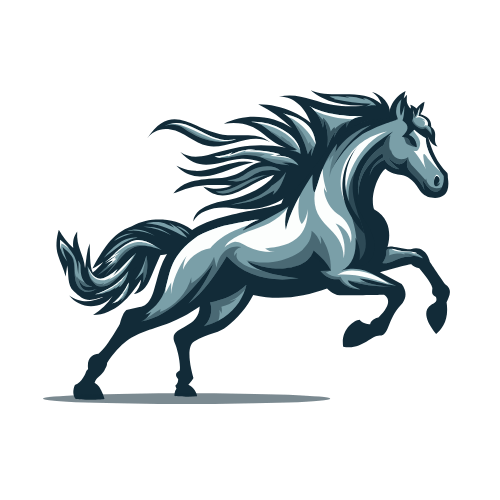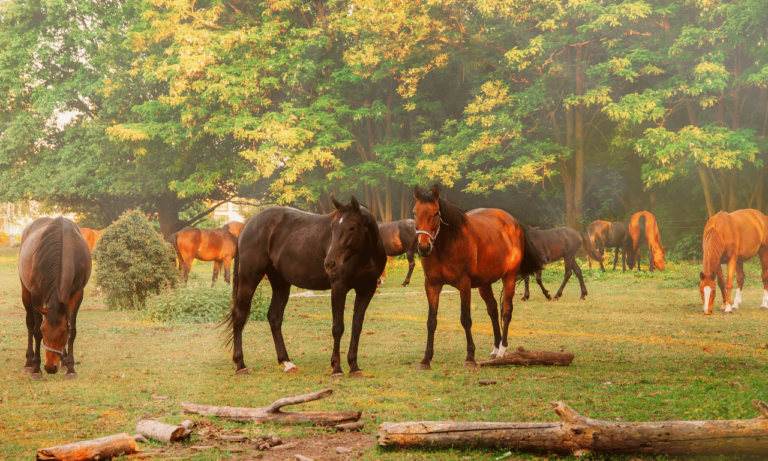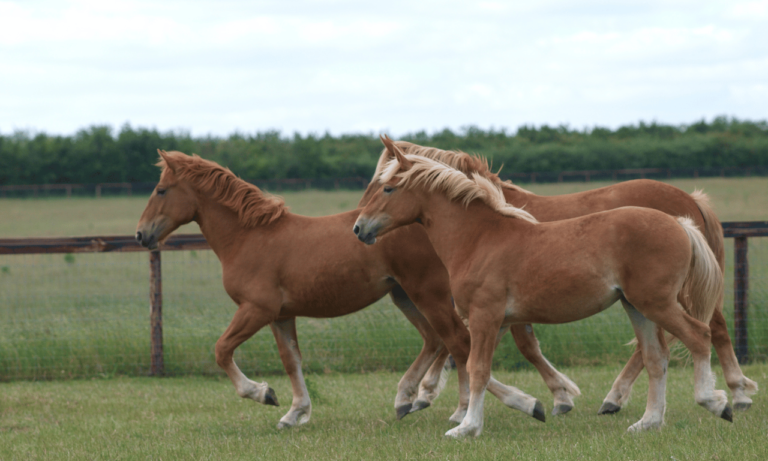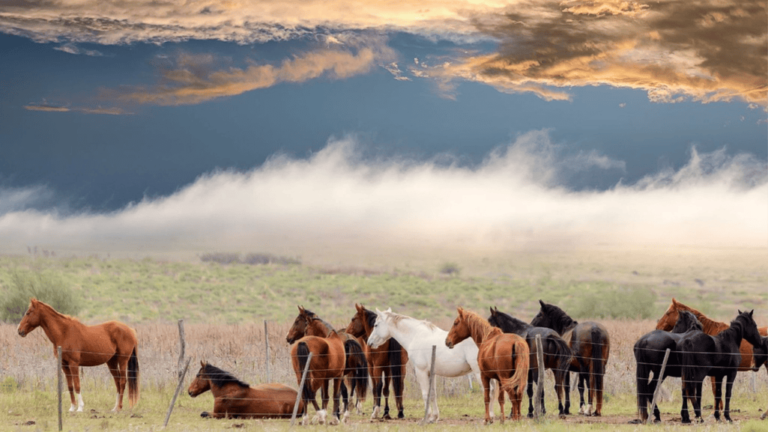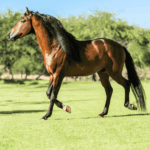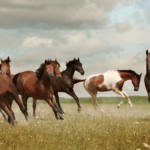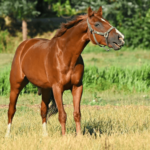Explore the amazing world of equine diversity with our detailed horse breed chart. From the elegant Arabian to the strong Clydesdale, there are over 200 different horse breeds globally. Each breed has its own special traits and history. This guide offers in-depth breed profiles, showing physical features, temperament, and origins. It helps you see the incredible range in the equine family.
Our horse breed chart sorts breeds into main groups like thoroughbreds, warmbloods, draft horses, and ponies. This makes it simpler to see the differences between horse breed categories. Whether you’re an experienced rider or just love these amazing animals, our guide will show you the unique qualities of each equine breed.
Key Takeaways
- Explore over 200 distinct horse breeds from around the world
- Discover unique breed characteristics, including physical features and temperament
- Learn about the origins and history of various equine breeds
- Understand the differences between major horse breed categories
- Gain a deeper appreciation for the incredible diversity within the equine family
Overview of Horse Breeds
The world of horse breeds is vast and diverse, with over 400 recognized equine varieties worldwide. These breeds are categorized into four main types: ponies, warmbloods, cold-bloods, and thoroughbreds. Each type has unique characteristics that make them special. It’s important for horse lovers to know these differences.
Diversity of Equine Breeds
Horses come in all shapes and sizes, showing their amazing adaptability. From the small Shetland pony to the tall Friesian, each breed excels in its own way. The American Walking Pony is a newer breed, registered since 1968 in the USA. Meanwhile, the Arabian has a history that goes back thousands of years.
Breed registries are key in keeping horse breeds pure. They decide if a breed is a “horse” or a “pony” and keep track of their lineage. The Arabian studbook is a great example of a closed system that keeps the breed’s traits intact.
Importance of Understanding Breed Characteristics
Knowing what makes each horse breed special is crucial. It helps when buying, training, or working with horses. Breed characteristics include physical traits, temperament, and what they’re good for. For example, thoroughbreds like the Arabian are fast and agile, perfect for racing.
Cold-blooded horses, like the Shire Horse, are big and gentle. They’re great for draft work and leisure rides. Understanding these differences helps find the right horse for any need.
| Breed Type | Characteristics | Examples |
|---|---|---|
| Thoroughbreds | Fine bones, speed, agility | Arabian, Achal Tekkiner |
| Warmbloods | Athleticism, versatility | Trakehner, Westphalian |
| Cold-bloods | Large size, strength, gentle nature | Shire Horse, Clydesdale |
| Ponies | Small size, hardiness, intelligence | Shetland Pony, Exmoor Pony |
Learning about different horse breeds helps you choose the right one. Whether for racing, leisure, or work, knowing breed characteristics is essential. It ensures you find a horse that fits your goals and preferences.
Major Horse Breed Categories
https://www.youtube.com/watch?v=I3GqsiQMzM8
The world of horses is incredibly diverse, with over 300 recognized breeds. They come in various sizes, shapes, and abilities. To understand this variety, we can group horse breeds into four main categories: thoroughbreds, warmbloods, draft horses, and ponies. Each category has unique traits that make them fit for different uses and disciplines.
Thoroughbreds
Thoroughbred horses are known for their speed, agility, and endurance. They are mainly used in racing, eventing, and endurance riding. These horses have a lean, muscular build and are between 15 and 17 hands high.
The famous Thoroughbred racehorse, Man o’ War, was born in 1917. He was one of 1,680 Thoroughbreds that year. This shows the breed’s popularity and importance in the equestrian world.
Warmbloods
Warmblood horses are versatile and excel in many equestrian disciplines. They include the Hanoverian, Oldenburg, and Dutch Warmblood. These horses are known for their athleticism, trainability, and elegant appearance.
Warmbloods are larger than thoroughbreds, with a more substantial build. They stand between 16 and 17.2 hands high.
Draft Horses
Draft horses are the gentle giants of the equine world. They were originally bred for heavy agricultural work and pulling carriages. Notable breeds include the Clydesdale, Percheron, and Belgian Draft.
These powerful horses are large, standing between 14.2 and 17.2 hands high and weighing 1,400 pounds or more. Historically, they were classified as draft, wagon, farm chucks, or southerners for their work in agriculture and transportation.
Ponies
Ponies are smaller than horses, measuring 14.2 hands high or less and weighing between 500 and 900 pounds. Popular breeds include the Shetland, Welsh, and Connemara. These compact equines are often used for riding by children or in specific disciplines like driving and show hunting.
Some horse breeds are classified as ponies if they mature at less than 145 cm or 14.2 hands. Horse registries determine whether a breed is a horse or a pony.
| Breed Category | Height Range | Weight Range | Common Uses |
|---|---|---|---|
| Thoroughbreds | 15 to 17 hands | 900 to 1,200 pounds | Racing, eventing, endurance riding |
| Warmbloods | 16 to 17.2 hands | 1,200 to 1,400 pounds | Dressage, show jumping, eventing |
| Draft Horses | 14.2 to 17.2 hands | 1,400 pounds or more | Agricultural work, pulling carriages |
| Ponies | 14.2 hands or less | 500 to 900 pounds | Children’s mounts, driving, show hunting |
Popular Horse Breeds and Their Characteristics
There are over 350 horse breeds worldwide, each with its own special traits. From the elegant Arabian to the strong Clydesdale, these breeds have won the hearts of many. Let’s explore five beloved breeds and what makes them unique.
Arabian Horses
Arabian horses come from the Arabian Peninsula and are among the oldest breeds. They are known for their unique head shape, high tail, and endurance. The Spruce Pets says they are 14 to 16 hands tall and weigh 800 to 1,000 pounds.
Quarter Horses
The American Quarter Horse is the most popular in the U.S. They are known for their strength, speed, and versatility. These horses are 14 to 16 hands tall and weigh 950 to 1,200 pounds.
Friesian Horses
Friesian horses come from the Netherlands and are known for their black coats and flowing manes. They were once used for work and war but now are popular in dressage and shows. They are 15 to 17 hands tall.
Clydesdale Horses
Clydesdale horses are from Scotland and are known for their size and gentle nature. They are famous for pulling carriages and are 16 to 18 hands tall, weighing 1,800 to 2,200 pounds.
Shetland Ponies
Shetland ponies are from the Shetland Islands and are one of the smallest breeds. Despite their size, they are strong, intelligent, and friendly. They are great for children and are 7 to 11.2 hands tall.
| Breed | Height (hands) | Weight (pounds) | Origin |
|---|---|---|---|
| Arabian | 14 – 16 | 800 – 1,000 | Arabian Peninsula |
| Quarter Horse | 14 – 16 | 950 – 1,200 | United States |
| Friesian | 15 – 17 | 1,300 – 1,500 | Netherlands |
| Clydesdale | 16 – 18 | 1,800 – 2,200 | Scotland |
| Shetland Pony | 7 – 11.2 | 400 – 450 | Shetland Islands, Scotland |
Knowing the unique traits and needs of these breeds is key for horse lovers. By understanding each breed’s history and purpose, we can appreciate their roles in our lives.
Rare and Endangered Horse Breeds
Some horse breeds are on the edge of disappearing. Their numbers are falling because of changes in farming, new technology, and different tastes. These rare breeds carry unique genes, history, and culture that could be lost forever.
The Food and Agriculture Organization (FAO) says 833 horse breeds exist worldwide. But, 308 are at risk, and 460 have unknown risks. Only 65 breeds are safe. This shows we must act fast to save these horses.
| Risk Status | Number of Horse Breeds |
|---|---|
| At Risk | 308 |
| Unknown Risk | 460 |
| Not at Risk | 65 |
Cleveland Bay
The Cleveland Bay is one of the oldest English breeds. It’s known for its bay color and versatility. Originally used for farming and pulling coaches, it’s now rare due to new farming methods.
Exmoor Pony
The Exmoor Pony is from the British Isles. It’s tough and fits well in the moors. But, it’s rare because of low numbers and the need for conservation.
Suffolk Punch
The Suffolk Punch is a draft horse from England. It’s famous for its chestnut color and strength. Now, it’s almost gone, with only a few hundred left.
“The loss of these rare and endangered horse breeds would be a tragedy, not only for the equine world but for our collective cultural heritage. It is crucial that we recognize the importance of preserving these unique lineages and take action to ensure their survival for future generations.”
We need to save these breeds through breeding programs, genetic care, and awareness. By helping organizations and sharing their stories, we can protect these horses. This way, we keep the beauty of horse diversity alive for the future.
Horse Breed Chart A Visual Guide
A horse breed chart is a detailed visual guide to the world of horses. It shows side-by-side comparisons of different breeds. This helps both horse lovers and newcomers understand each breed’s unique traits, origins, and uses.
Horse breed illustrations and short descriptions make it easy to spot and enjoy each breed’s special features.
“Horse & Pony Breeds (Complete Handbook)” is a great resource, published in 2004. It covers over 100 breeds with ancestry diagrams. Priced at $9.95, it’s a budget-friendly guide for horse enthusiasts.
“Horse Breeds Of North America” by Judith Dutson, from 2006, focuses on breeds from North America. It includes 96 horses, ponies, donkeys, and draft horses with detailed profiles and photos. At $10.95, it’s a valuable resource for exploring North America’s equine heritage.
“Horses: A Portrait Of The Animal World” by Paul Sterry, from 1994, is a stunning introduction to horses. With its color photos, it’s a captivating guide for all ages.
The “International Encyclopedia of Horse Breeds” by Bonnie Hendricks is the ultimate horse breed chart. It describes over 394 breeds worldwide. It offers a global view of horses’ role in history and nature. Each breed has its origin, physical description, and historical context.
Exploring these visual guides helps deepen our appreciation for horses’ diversity and beauty. Whether you’re a horse owner or just admire them, a good horse breed chart is essential. It expands your knowledge and understanding of the equine world.
Factors Influencing Breed Characteristics
Horse breed characteristics come from many factors. These include where they come from, how they were bred, and how they adapted to their environment. These elements have made the many different horse breeds we see today. Each breed has its own look, personality, and skills.
Geographical Origins
The place where a horse breed started is key to its traits. Horses from cold places, like the Icelandic Horse, are tough and have thick coats. They can handle harsh weather and rough land.
On the other hand, horses from warmer places, like the Arabian, are lean and agile. They fit well in their mild environments.
Selective Breeding
Choosing certain traits has shaped horse breeds. Breeders picked horses for different jobs, like racing or carrying heavy loads. This has made breeds like the Thoroughbred fast and strong.
Draft breeds, like the Clydesdale, are big and strong. They are great for heavy work.
Genetic studies have shown how genes affect breed traits. For example, a gene affects racing speed in Thoroughbreds. Another gene impacts how horses move, especially in certain breeds.
| Breed | Selective Breeding Focus | Resulting Characteristics |
|---|---|---|
| Thoroughbred | Speed and endurance | Lean, athletic build; competitive spirit |
| Clydesdale | Strength and size | Large, muscular build; calm temperament |
| Arabian | Endurance and refinement | Compact, elegant build; intelligent and spirited |
Adaptations to Climate and Terrain
Horses have changed to fit their environments. This is why we see so many different horse breeds. For example, the Shetland Pony has a thick coat to stay warm in cold winds.
The Mustang, found in the American West, has strong hooves and a tough build. It thrives in the semi-arid lands.
“The horse is a unique combination of history and biology, with each breed reflecting the specific challenges and opportunities of its geographical origins, the selective pressures of human breeding, and the adaptations necessary to thrive in its native environment.” – Dr. Elizabeth Ransom, Equine Geneticist
In conclusion, the variety of horse breeds today comes from their origins, breeding, and adaptations. Knowing these factors helps us appreciate and protect these amazing animals for the future.
Choosing the Right Horse Breed
When picking a horse breed, many things matter. You need to think about your experience, what you want to do with the horse, and how much time you can spend on care and training. It’s important to consider these factors carefully.
There are over 350 horse breeds worldwide, each with its own special traits. Finding the right one can be tough. But, knowing what you want and what each breed offers can help you make a great choice.
Evaluating Your Needs and Preferences
Start by thinking about what you need and want. Ask yourself:
- What is your riding experience level?
- What activities do you want to do with your horse?
- How much time can you spend on training and care?
- What’s your budget for a horse?
Answering these questions will help you find a breed that fits your goals and lifestyle.
Considering Temperament and Trainability
Temperament and trainability are key when picking a breed. Some breeds, like the American Quarter Horse, are calm and easy to train. They’re great for riders of all levels.
The American Quarter Horse is the most popular breed in the United States, with over three million registered with the American Quarter Horse Association. They are sought after for their solid, muscular build, quick learning capabilities, and friendly demeanor.
Other breeds, like the Arabian horse, are more spirited and need an experienced handler. They’re beautiful, smart, and long-lasting, but might not be right for beginners.
Matching Breed to Discipline or Purpose
Different breeds are better for different activities. Think about what you want to do with your horse. For example:
| Breed | Disciplines/Purpose |
|---|---|
| Thoroughbred | Horse racing, show jumping, eventing, dressage |
| Belgian Draft | Heavy pulling work, agricultural tasks |
| Shetland Pony | Riding for children, driving, companion animal |
| Warmblood | Dressage, show jumping, eventing |
Choosing a breed that matches your goals can lead to a rewarding partnership.
Remember, picking the right horse breed is a personal choice. It requires careful thought about your goals, preferences, and resources. Take time to research and meet different breeds. Don’t be afraid to ask for advice from experienced riders and professionals.
Caring for Different Horse Breeds
Each horse breed has its own needs for food and grooming. These needs change based on size, how active they are, and their coat type. Giving them the right care keeps them healthy, happy, and looking their best.
Breed-Specific Nutritional Requirements
Horses need different amounts of food based on their breed and size. Big breeds like draft horses need more calories to keep their size. Smaller breeds, like Shetland Ponies, need less to avoid getting too fat. Here’s a guide for feeding based on size:
| Horse Size | Height (hands) | Weight (kg) | Daily Feed (kg) |
|---|---|---|---|
| Ponies | Up to 13.5 | 200-350 | 3-7 |
| Galloways | 13.5-15 | 350-500 | 7-10 |
| Horses | 15-16.5 | 500-650 | 10-13 |
| Heavy Horses | 16.5+ | 650+ | 13+ |
It’s also important to make sure horses always have clean, fresh water. In warm weather, they might drink 25-45 liters a day.
Grooming and Maintenance Needs
Different breeds need different grooming and care because of their coat type and length. Long-haired breeds like Friesians need regular brushing to avoid tangles. Short-haired breeds like Arabians are easier to groom.
All horses need regular grooming. It keeps their coat shiny, promotes blood flow, and lets you check for injuries or skin problems. Focus on these areas during grooming:
- Brushing the coat to remove dirt and promote shine
- Combing the mane and tail to prevent tangles
- Cleaning the hooves and checking for signs of injury or infection
- Inspecting the eyes, ears, and nose for any discharge or irregularities
A well-groomed horse is a reflection of a dedicated and caring owner.
Knowing what your horse breed needs for food and grooming helps you care for them better. This ensures they stay healthy and happy.
Conclusion
The horse breed chart highlights the amazing variety of horses around the world. Each breed has its own special traits shaped by where they come from, how they were bred, and their environment. From the grand Thoroughbreds to the strong draft horses and lively ponies, knowing about these traits is key for anyone who loves horses or wants to own one.
Choosing the right horse means looking at more than just how it looks. You also need to think about its personality, how easy it is to train, and if it fits your plans. By matching your needs with the right breed, you can create a happy and fulfilling bond with your horse.
Also, taking care of different horse breeds needs to know their special diet, grooming, and health needs. By adjusting your care to fit the breed, your horse can be happy and reach its best. The horse breed chart is a great tool for learning about the world of horses. It helps horse lovers make smart choices and appreciate the beauty and variety of these amazing animals.
